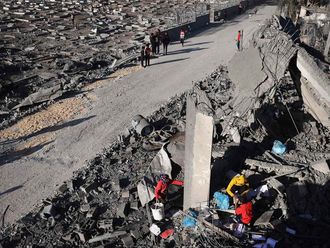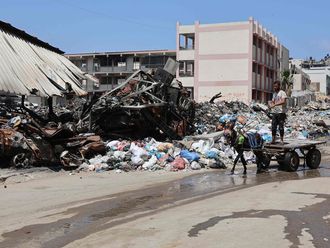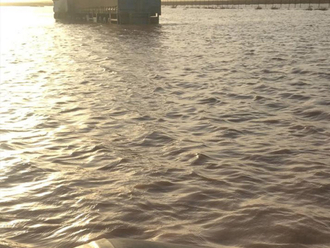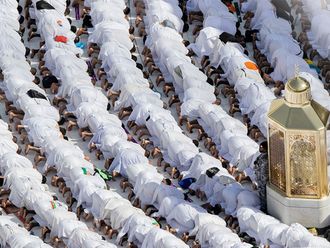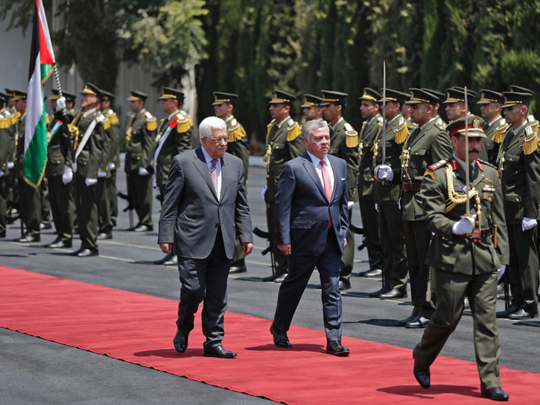
Ramallah: Jordan’s King Abdullah will met Palestinian President Mahmoud Abbas in the Israeli-occupied West Bank on Monday for the first time in five years to discuss tensions at the Muslim holy site of Al Haram Al Sharif in Occupied and wider political developments.
While the two leaders meet fairly frequently in Amman and other regional capitals, Abdullah has not visited Ramallah, the seat of the Palestinian Authority, since December 2012.
The king flew in by helicopter—thevisit was coordinated with Israeli authorities which control all entrance and exit points to the West Bank, including its 150 km border with Jordan and the air space above.
Palestinian officials provided little detail on what Abbas and Abdullah would discuss, but said the situation at Al Aqsa and broader political concerns would be touched on.
“The visit comes in the course of continued consultation and coordination on all levels,” said Nabil Abu Rudainah, Abbas’s spokesman.
“They will also evaluate the current incidents happening in Jerusalem and in particular what happened at Al Aqsa mosque and the efforts exerted to resolve the crisis.”
Jordan, which signed a peace treaty with Israel in 1994 and a large percentage of Jordan’s population is made up of Palestinians who fled from a Israeli assault in the 1967 War. Jordan shares a border with the Occupied West Bank, which the Palestinians want for their own state together with East Jerusalem and Gaza.
Abbas and Abdullah are also likely to discuss US-led efforts to restart Israeli-Palestinian peace talks, which have been suspended for the past three years.
President Donald Trump’s regional envoy, Jason Greenblatt, has made several trips to Amman, Ramallah and Occupied Jerusalem this year to try to find common ground, but there is little sign of progress.
Abdullah’s visit comes two weeks after sizzling tensions surrounding Al Haram Al Sharif.
On July 14, following a shoot-out around Al Haram Al Sharif, occupation forces closed off the holy shrine under the pretext of security and prevented Muslims from performing Friday prayers there for the first time since the occupation of Jerusalem. Two days later, the occupation reopened the holy site but Muslim worshippers were outraged to find they had to enter their holy shrine through metal detectors.
Palestinians refused to enter Al Haram Al Sharif and staged peaceful street demonstrations and held daily prayers outside Al Haram Al Sharif in the following days.
Under massive pressure, Israeli Prime Minister Benjamin Netanyahu was forced to remove the metal detectors and smart cameras the occupation forces had installed at the entrances of the site.
Jews are allowed to visit Al Haram Al Sharif, but not perform religious rituals there, according to a long-standing status quo agreement. Attempts by Israel’s regime to change the status quo have led to escalating violence and tensions which have claimed the lives of over 210 Palestinians and 33 Israelis.
Israel’s regime took over Al Haram Al Sharif and the entire eastern part of Jerusalem and annexed it during the 1967 Middle East war, but left the Jordanian Waqf Department to administer and run the Muslim holy sites in a historic status quo agreement which governs access to the holy shrine.
Ongoing incursions by Jews on Al Haram Al Sharif premises have been the largest instigator of violence since last year. Palestinians say the Israeli regime is encouraging its citizens to violate the status quo agreement in an effort to change the facts on the ground and erase all Palestinian and Muslim identity from occupied Jerusalem.
Al Haram Al Sharif is built on top of the ancient remnants of the Temple Mount, a site sacred in Judaism, but was destroyed in the 4th century by the Romans, during their rule.
Al Haram Al Sharif site houses both Al Aqsa Mosque which was originally commissioned to be built under Omar, the second Caliph in Islam in the 7th century, and the Dome of the Rock which houses the rock from which Prophet Mohammad (PBUH) ascended to heaven, according to Islamic teachings.


